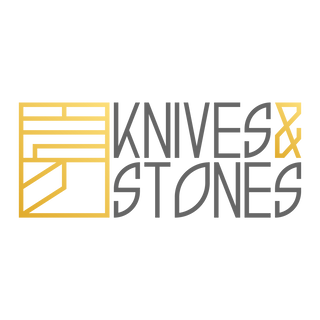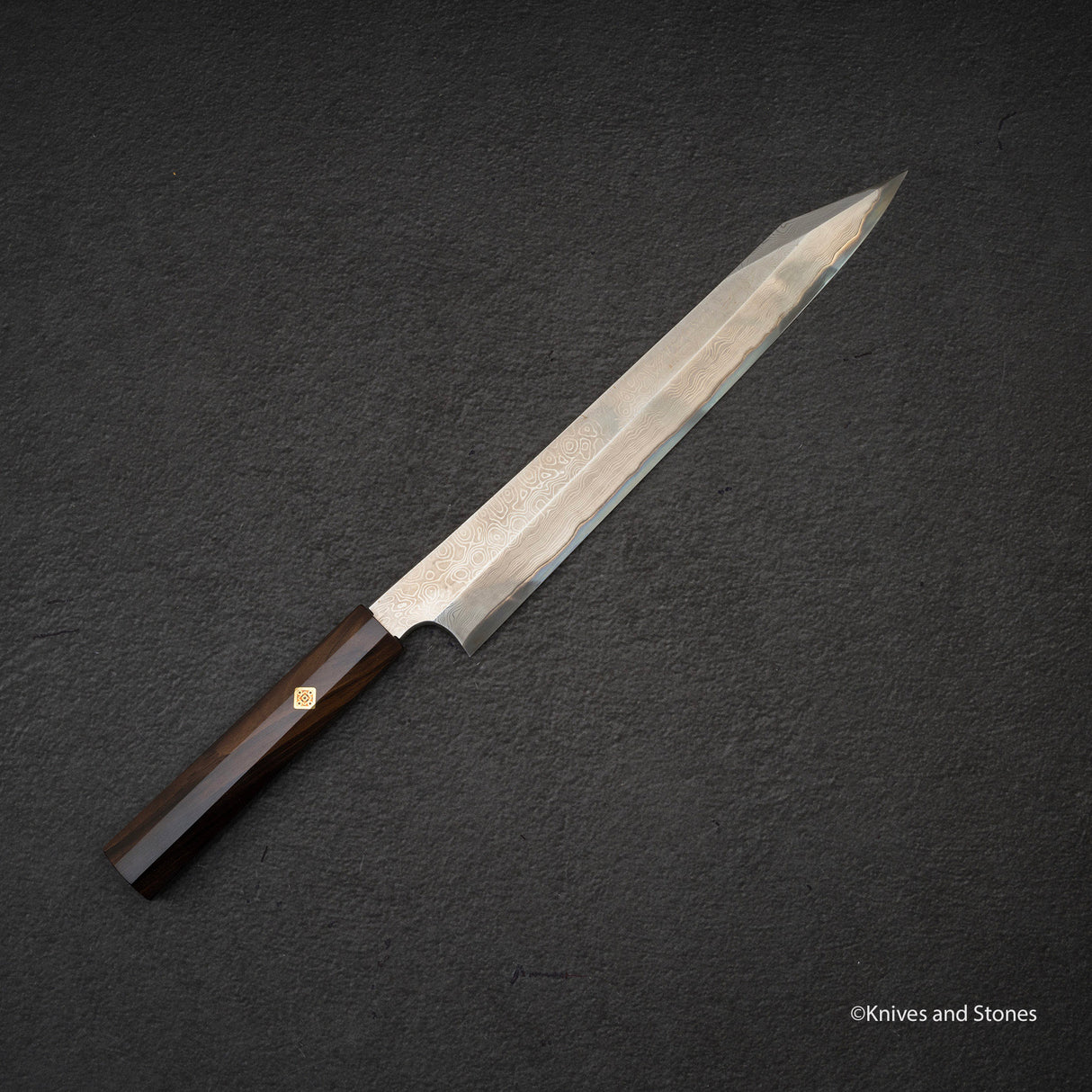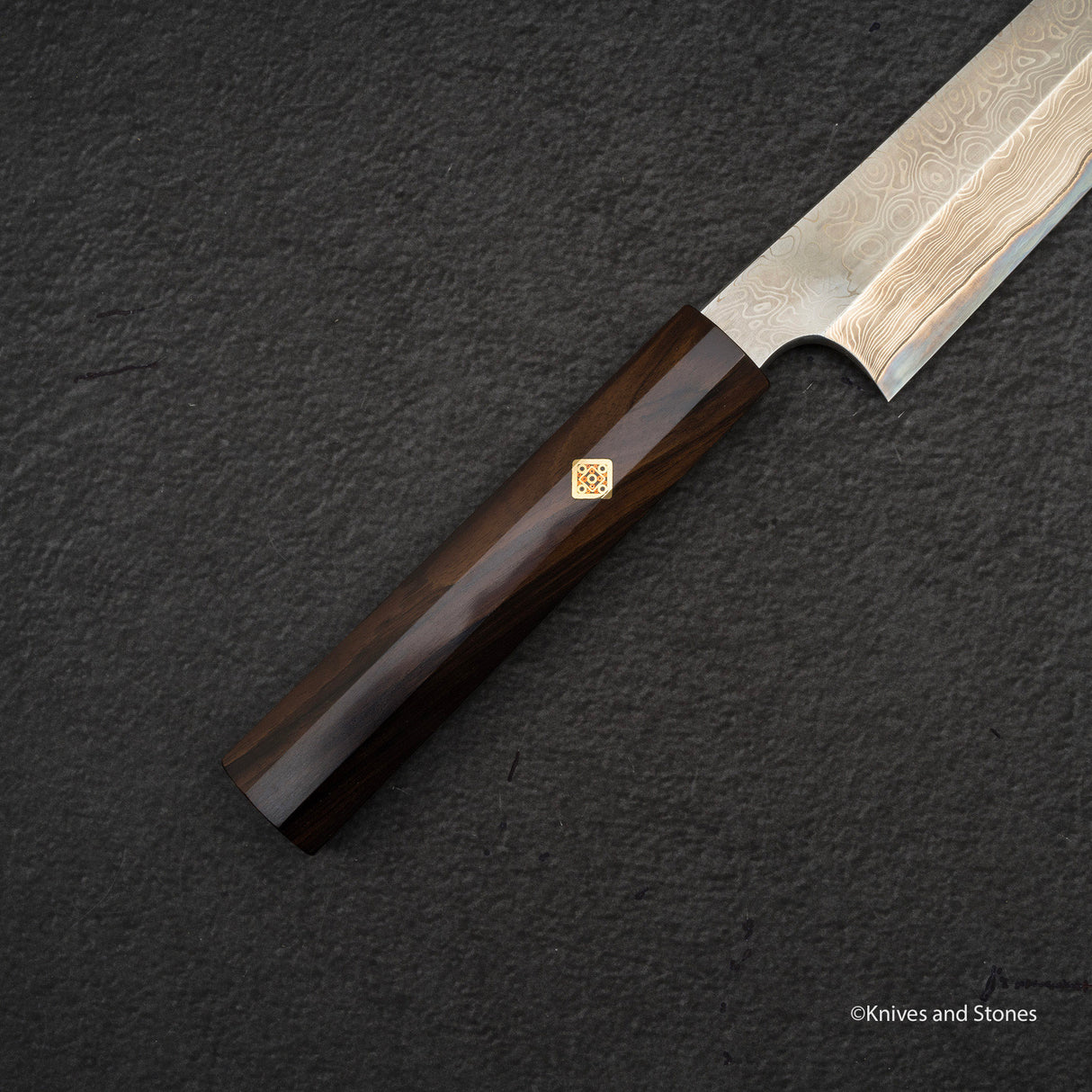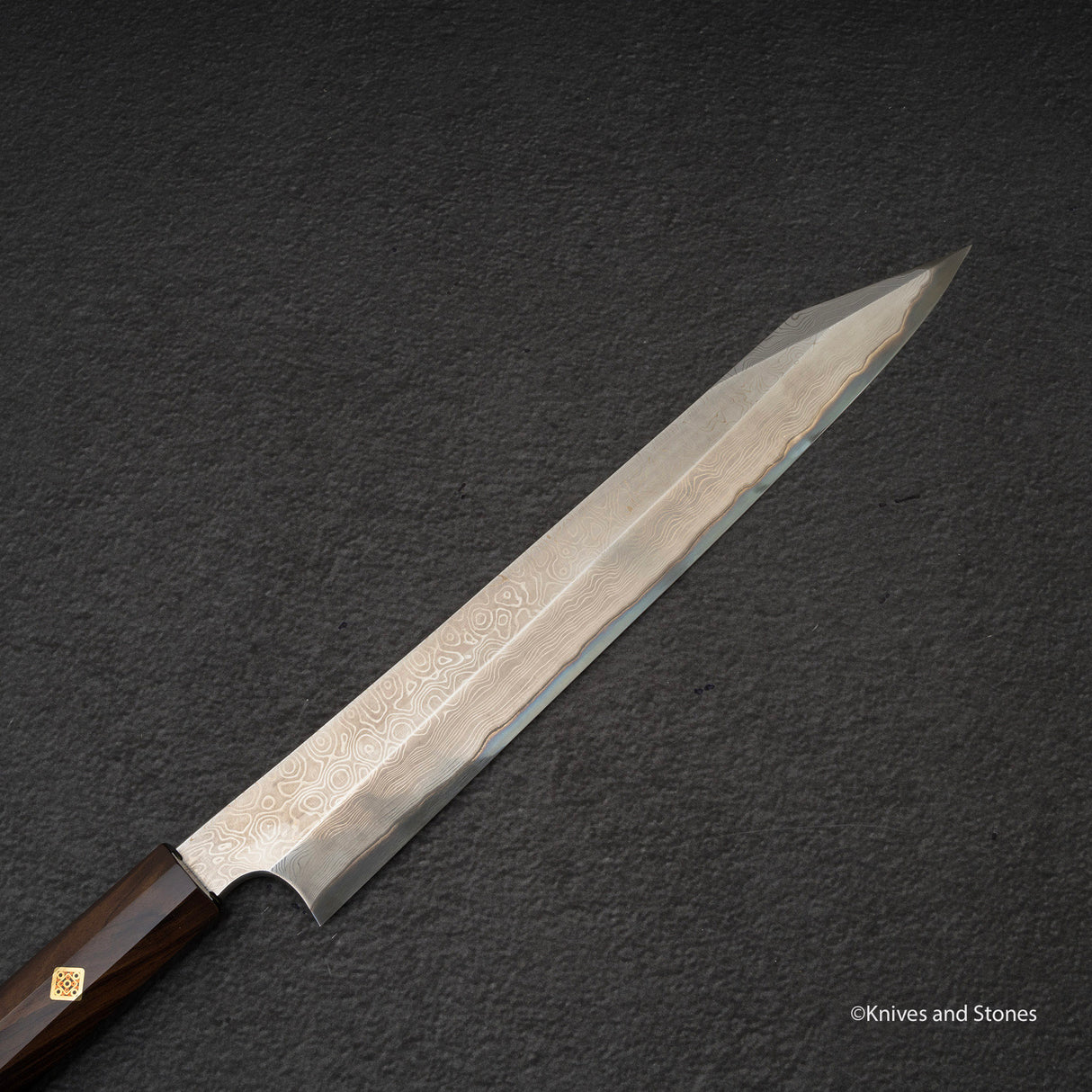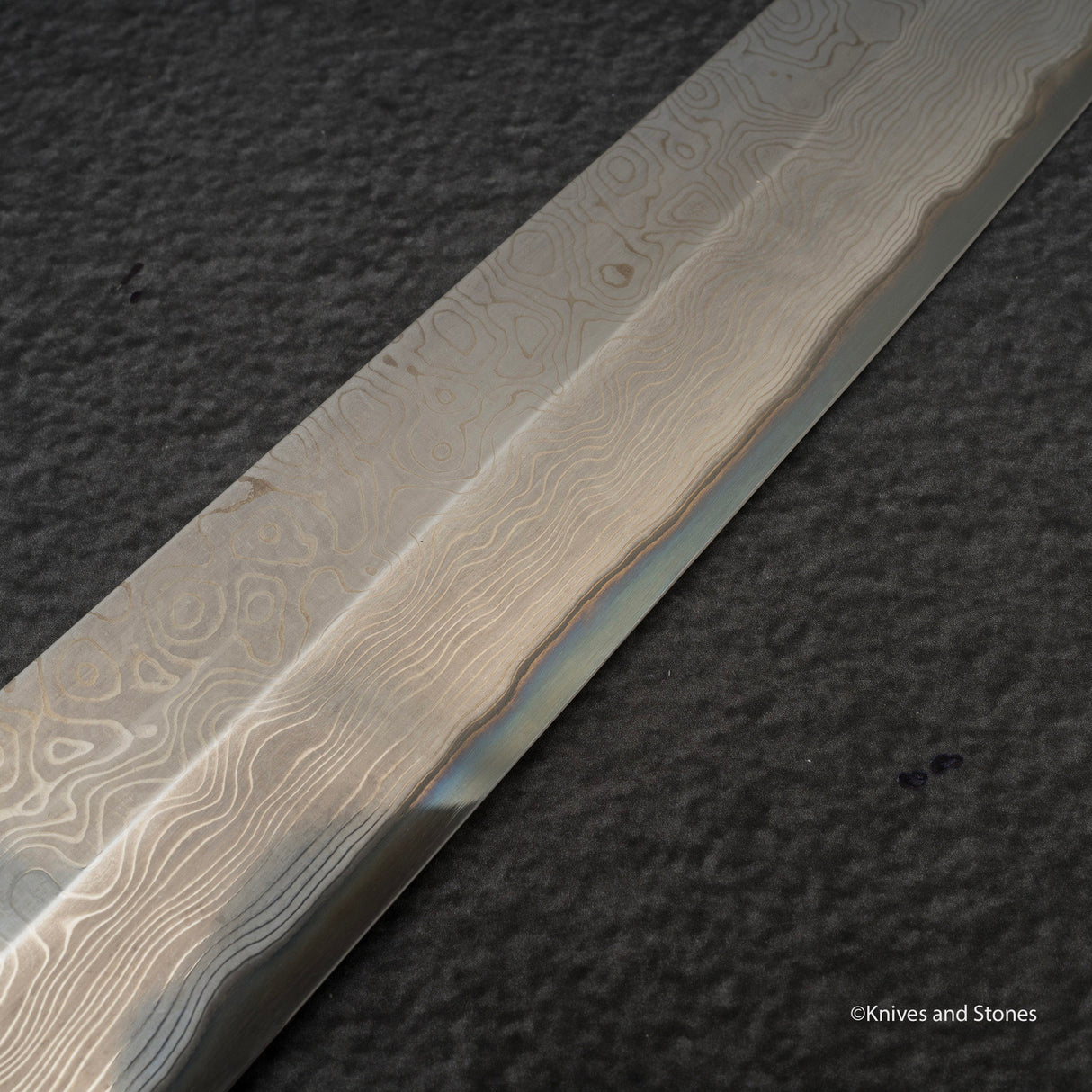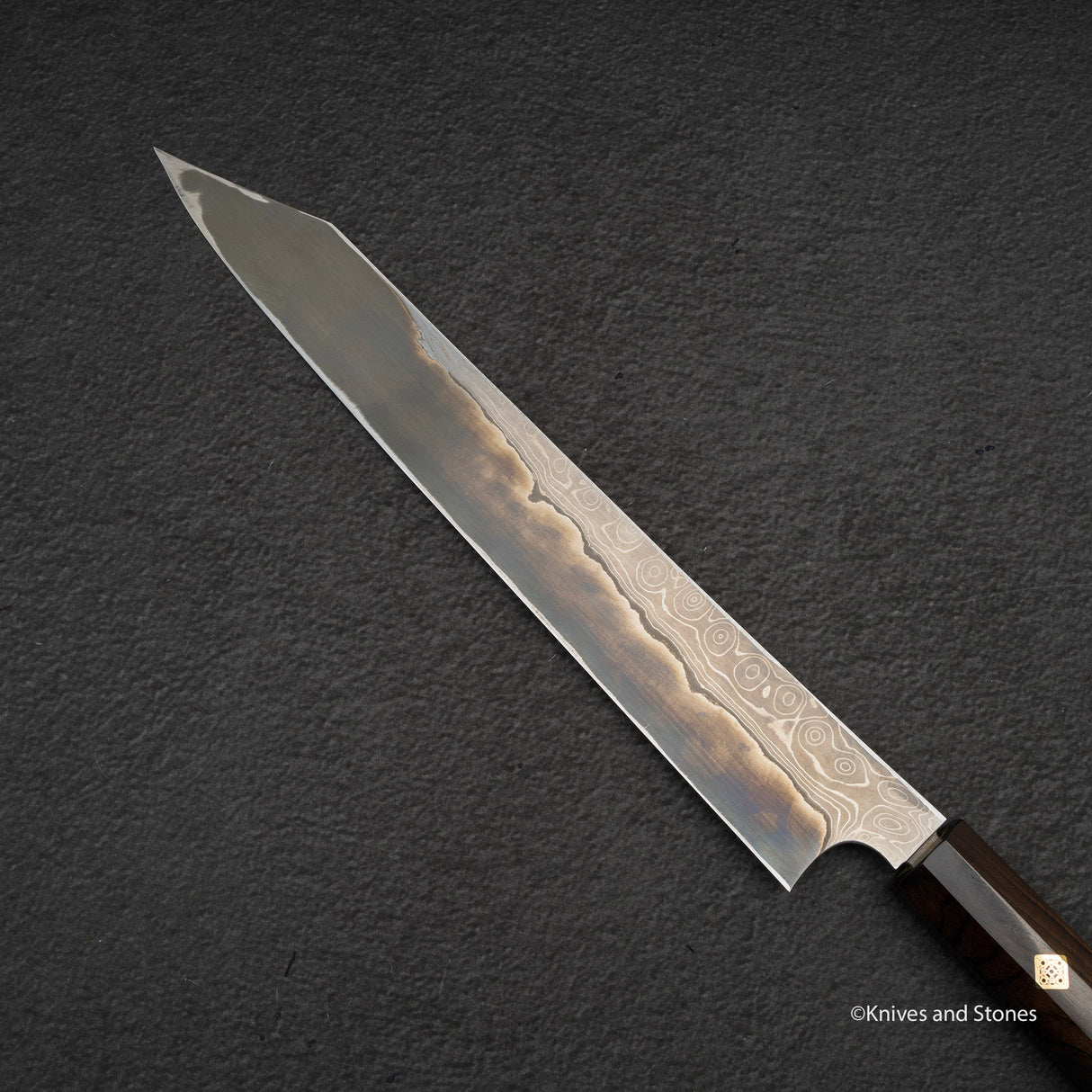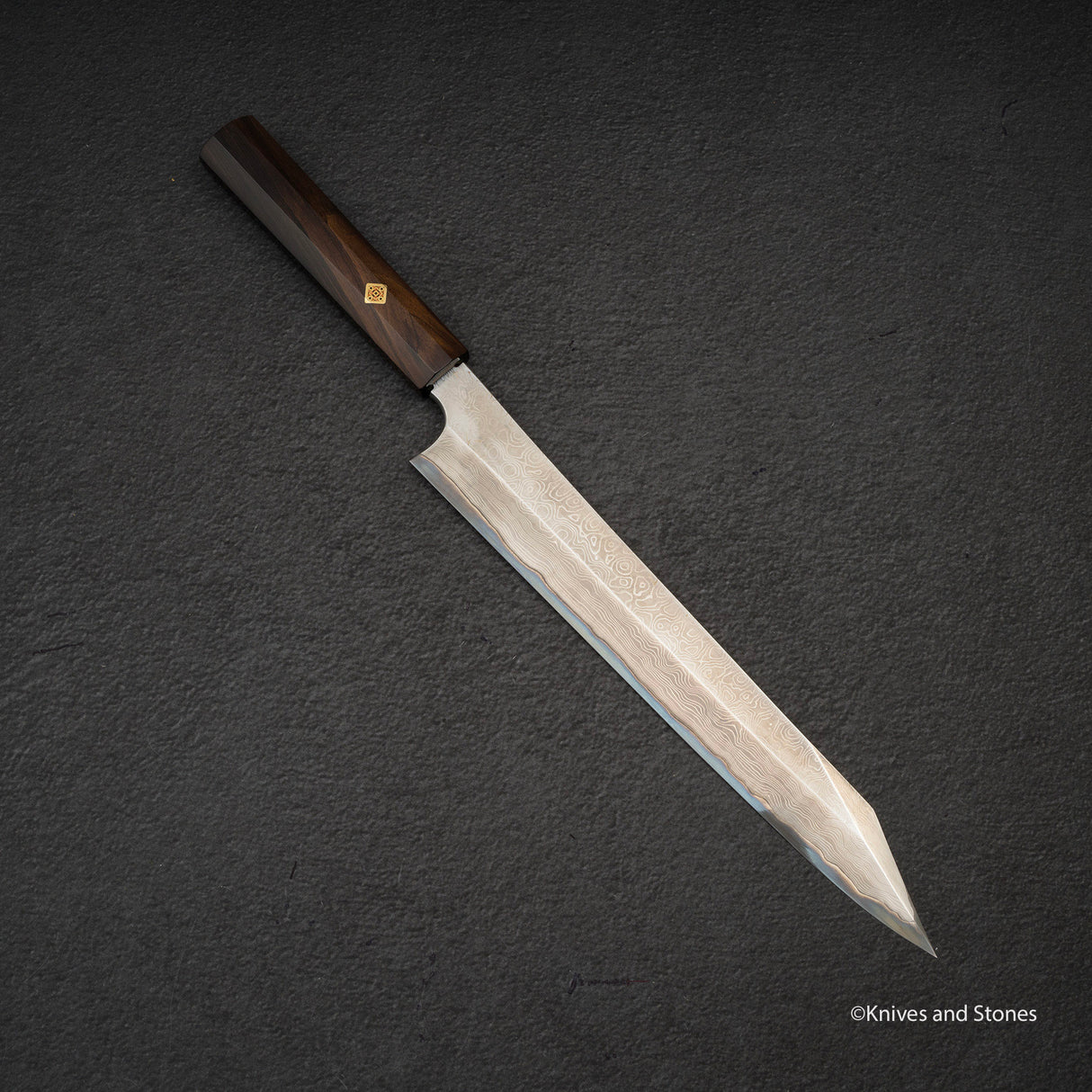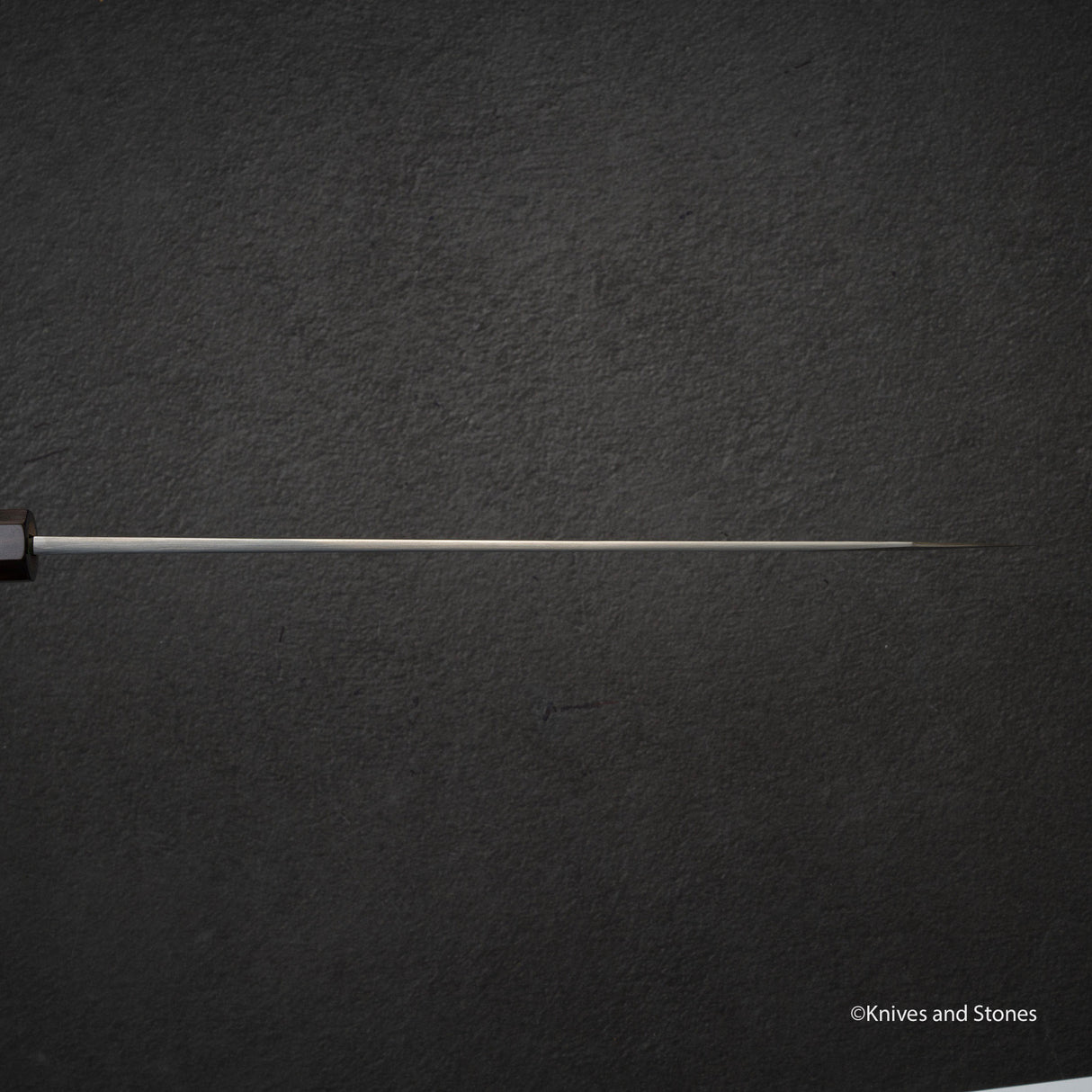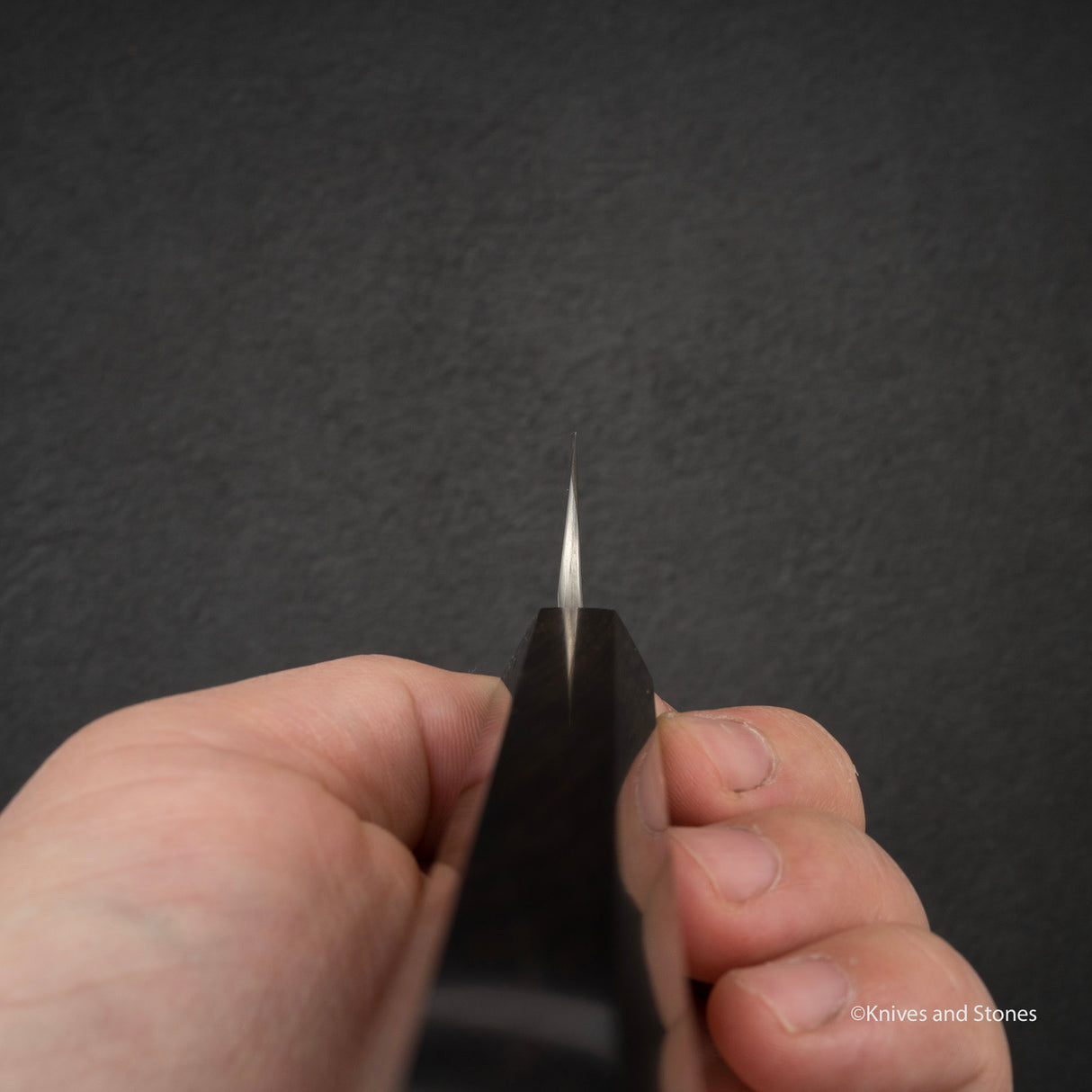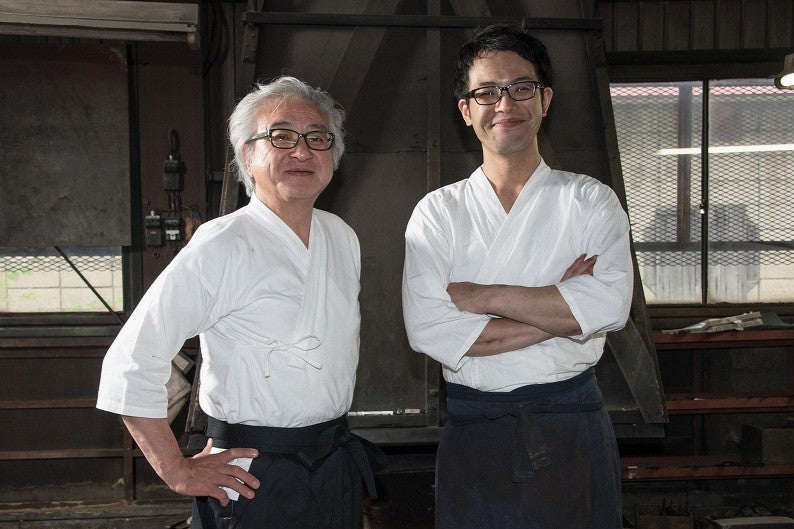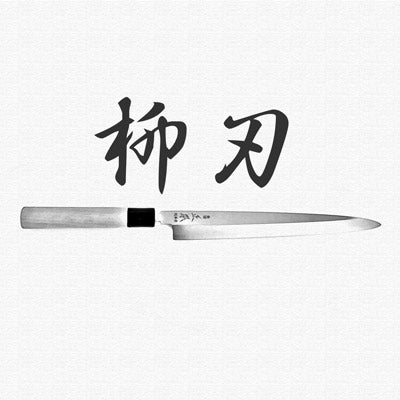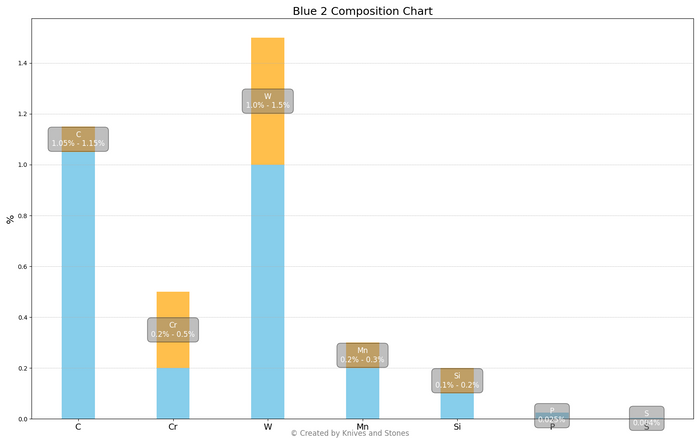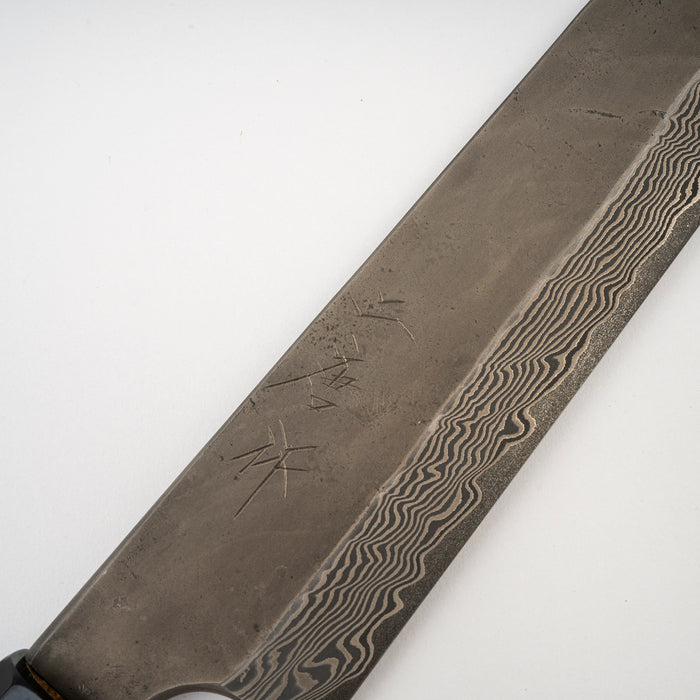Nigara Anmon Kurozome Blue 2 Damascus Kiritsuke Yanagiba 270mm
Nigara Anmon Kurozome Blue 2 Damascus Kiritsuke Yanagiba 270mm is backordered and will ship as soon as it is back in stock.
Couldn't load pickup availability
K&S Price: AU $959.00* inc. tax , vs:
| Store CK | AU $1146.0 | -19.5% |
* For overseas buyers you pay no GST (10%) and low shipping rate.
Last Update: 2025-01-03T16:45:16Z
Detailed Specifications
| Line | Nigara Anmon Blue 2 |
| Profile | Yanagiba |
| Bevel Type | Single Bevel |
| Weight | 209 g 7.37 oz |
| Edge Length | 263 mm .10.35 inch |
| Heel Height | 40 mm .1.57 inch |
| Width @ Spine | 4.1 mm 0.16 inch |
| Width @ Mid | 3.0 mm 0.12 inch |
| Width @ 1cm from Tip | 0.8 mm 0.03 inch |
| Steel | Blue 2 / Aogami #2 | Carbon |
| Blade Construction | Nimai- Soft Iron Damascus Clad |
| Hardness (HRC) | 61 - 63 |
| Surface Finish | Etched |
| Handle | Ebony Mosaic |
| Region | Aomori |
| Best for |
|

| Pros | Cons |
|
|
|
Care Instruction
- Don't cut hard things! Japanese knives are brittle so bone hacking is a NO NO!
- Wash with neutral detergent after use, and wipe dry;
- Please don't wash knife with dishwasher, it will damage the wood handle;
- Be careful not to leave the knife close to a heat source for a long time;
- It is a lot more dangerous to cut with a blunt knife than a sharp knife!
- It is best to sharpen a Japanese knife regularly on a waterstone.
- Oil the (carbon) knife if storing for an extended period of time to prevent rust.
